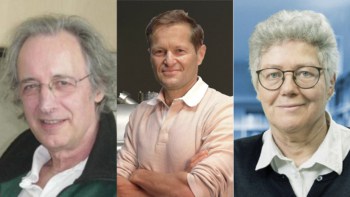
An organic material in a metastable phase behaves a little like a room-temperature superconductor when excited with laser light. Though this behaviour fades almost as quickly as the laser pulse that induces it, the team behind the discovery say that with the right light source, it might be possible to keep the material in its superconducting-like state continuously.
Scientists have known for a while that shining light at terahertz and mid-infrared frequencies on certain materials is a good way to manipulate their properties. In some cases, this method can even be used to create non-equilibrium material phases that have no analogue under normal conditions.
“Our group has been studying how to use coherent light fields to amplify or otherwise enhance superconductivity – a state that is generally obtained from the spontaneous formation of electronic coherence (the pairing up electron pairs),” explains Andrea Cavalleri, a physicist at the Max Planck Institute for the Structure and Dynamics of Matter (MPSD) in Hamburg, Germany who led the research effort. “In the past, we found that in a number of materials (the cuprates [copper oxides] and some organic materials like K3C60), this effect appears to be possible.”
In the new work, which is described in Nature Physics, Cavalleri and colleagues showed that photoexciting the material with a light source tuned to 10 THz is much more efficient at producing the effect in K3C60 than previous techniques. Indeed, the researchers found they could generate the same superconducting state as in earlier studies with a 100-fold lower laser fluence. This non-equilibrium superconducting state lasts for nanoseconds and appears at room temperature, making the discovery “especially significant”, Cavalleri says.
New optical source
Frequencies in the few-terahertz range are particularly difficult for ultrashort pulsed lasers to produce, and the latest result was made possible by developing a new optical source. This source is based on chirped pulses, and the MPSD researchers fabricated it using a combination of techniques. In a follow-up work published in Nature Communications, they additionally showed that they could integrate the source onto a chip, which they say could lead to a wider range of opto-electronic applications.

According to the researchers, a light source with a higher repetition rate – that is, a shorter duration between consecutive laser pulses – could allow the metastable superconducting state to last longer. “If we could deliver each new pulse before the sample returns to its non-superconducting equilibrium state, it may be possible to sustain the superconducting-like state continuously,” explains team member Edward Rowe.
Cavalleri is even more optimistic. “We are reaching a regime that is not far off from one in which you could imagine driving superconductors with continuous wave sources to obtain steady state room temperature operation,” he tells Physics World. “We could envisage driving this effect in steady state with only a few watts of power.” The main bottleneck, he adds, is the shortage of continuous-wave light sources available at 10 THz.

Terahertz radiation drives compact ultrafast electron diffractometer
The MPSD team now plans to characterize the metastable superconducting-like state to the same level of precision that is possible at equilibrium, with the aim of better understanding the microscopic mechanisms behind photoinduced superconductivity. Among other quantities, they hope to measure the state’s magnetic and electrical properties, atomic structure and perhaps quantum phenomena such as electron tunnelling, proximity effects and other related phenomena. “It will also be interesting to think of new potential applications for such system in quantum optoelectronics,” Cavalleri says.



